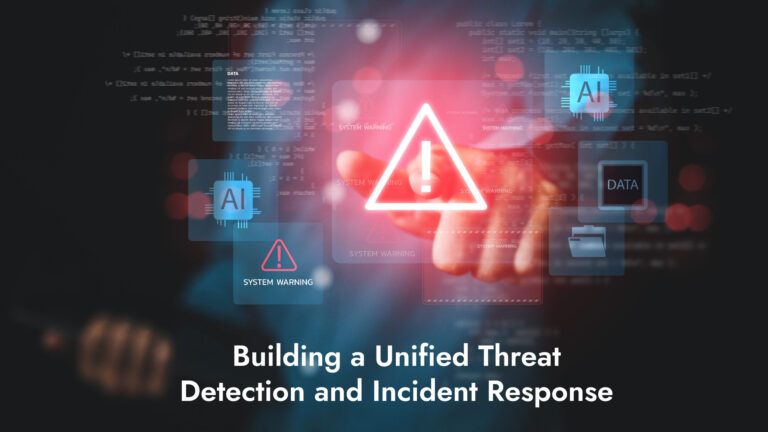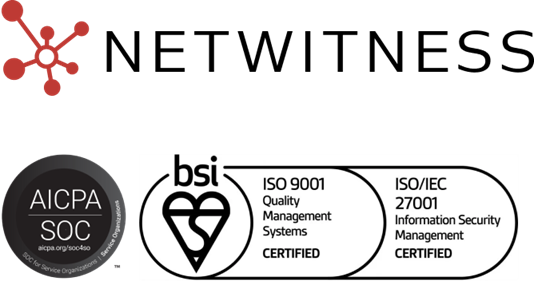What is Cyber Threat Monitoring?
Cyber threat monitoring is the continuous process of scanning, analyzing, and responding to potential security risks across an organization’s digital infrastructure in real-time. Unlike traditional security approaches that wait for known attack signatures, modern threat monitoring combines behavioral analytics, machine learning, and threat intelligence to identify suspicious activities before they escalate into full-blown breaches.
This proactive approach enables security teams to detect everything from malware infections and unauthorized access attempts to data exfiltration and insider threats as they happen, dramatically reducing the window attackers have to cause damage.
Synonyms
- Cybersecurity Monitoring
- Network Security Monitoring
- Security Event Monitoring
- Risk Monitoring
- Threat Detection
- Intrusion Detection
- Threat Assessment
- Continuous Monitoring
Why Cyber Threat Monitoring Matters
Organizations face a fundamental problem: attackers move fast, and traditional defenses are too slow. The average dwell time for attackers inside a network dropped to 10 days in 2023, but even that brief window is enough for cybercriminals to steal sensitive data, deploy ransomware, or sabotage critical systems.
- Attackers Exploit the Time Gap: Modern cyberattacks like SQL injection or ransomware deployment can execute in minutes or hours. Without real-time visibility, organizations only discover breaches after the damage is done.
- Traditional Perimeters No Longer Exist: Cloud infrastructure, remote workforces, and BYOD policies have dissolved network boundaries. Your attack surface now includes cloud misconfigurations, insecure home networks, ephemeral containers, and unmanaged devices accessing corporate resources.
- Compliance and Reputation Are on the Line: Regulations like GDPR, HIPAA, PCI DSS, DORA, and CIRCIA increasingly mandate continuous monitoring capabilities. Failure to detect breaches promptly leads to massive fines and erodes customer trust through customer turnover and brand damage.
- Human Error Remains the Weakest Link: Studies show human error causes up to 95% of security breaches. Effective threat monitoring must address both external attacks and internal risks from negligent users, compromised credentials, and malicious insiders.
How Cyber Threat Monitoring Works
Effective cybersecurity threat monitoring operates through multiple integrated layers:
- Continuous Data Collection: Modern cyber threat monitoring systems aggregate security data from network traffic logs, endpoint activities, cloud environment audit logs, authentication attempts, and application behaviors to create a unified view across all systems.
- Behavioral Analysis and Anomaly Detection: Rather than relying solely on known threat signatures, advanced monitoring uses User and Entity Behavior Analytics (UEBA) to establish baseline patterns, then flags deviations like unusual login times, abnormal data access volumes, or suspicious lateral movement.
- Threat Intelligence Integration: Cyber threat intelligence monitoring pulls real-time information from external sources including dark web forums, ransomware blogs, vulnerability databases, and industry threat feeds to help security teams understand if indicators match known attacker tactics.
- Automated Correlation and Prioritization: Security Information and Event Management (SIEM) platforms correlate events across multiple data sources to identify patterns, while AI-powered triage systems prioritize findings based on severity and potential business impact.
- Real-Time Response Capabilities: When threats are detected, Security Orchestration, Automation, and Response (SOAR) platforms execute pre-defined playbooks that automatically isolate compromised endpoints, block malicious IP addresses, or escalate critical incidents.
Types of Cyber Threats Monitored
- External Attack Vectors: Detection of malware, ransomware, phishing attempts, DDoS attacks, and command-and-control communication between compromised systems and external servers.
- Internal Security Risks: Monitoring for malicious insiders deliberately stealing data, negligent users inadvertently causing incidents, compromised credentials hijacked by external attackers, and unauthorized privilege escalation attempts.
- Infrastructure Vulnerabilities: Identification of cloud misconfigurations, unpatched systems with known vulnerabilities, Shadow IT applications deployed without security oversight, and third-party vendor risks.
Best Practices for Cyber Threat Monitoring
- Adopt an Assume Breach Mindset: Implement Zero Trust principles that treat every access request as potentially malicious, requiring continuous verification regardless of whether it originates inside or outside your network.
- Map Your Complete Digital Footprint: Maintain an automatically updated, real-time inventory of all hardware, software, cloud instances, domains, SaaS applications, and third-party connections.
- Leverage AI to Scale Detection: Deploy AI and LLMs to automate routine analysis, intelligence gathering, and initial triage, freeing human experts for complex investigations.
- Implement Layered Monitoring: Combine UEBA, DLP, privileged access management, network traffic analysis, and security analytics to correlate indicators across multiple data sources.
- Focus on High-Risk Indicators: Concentrate enhanced monitoring on employees with access to sensitive data, activities involving unusual data volumes or occurring outside business hours, and access requests outside normal job responsibilities.
- Validate Through Attack Simulations: Regularly test your defenses through red team exercises, tabletop scenarios, and purple team collaborations that reveal gaps before real attackers exploit them.
Related Terms & Synonyms
- Cybersecurity Monitoring: Cybersecurity monitoring is a comprehensive oversight of all security aspects across digital assets, including networks, endpoints, applications, and cloud environments.
- Network Security Monitoring: Continuous analysis of network traffic and communications to detect anomalies, policy violations, and attack patterns in real-time.
- Security Event Monitoring: Real-time collection and analysis of security-relevant events occurring across IT systems, applications, and infrastructure.
- Risk Monitoring: Systematic tracking and assessment of security risks to prioritize remediation efforts and allocate resources effectively.
- Threat Detection: The capability to identify potential security incidents through analysis of system activities, network traffic, and user behaviors across your infrastructure.
- Intrusion Detection: Systems and processes specifically focused on identifying unauthorized access attempts or malicious activities within networks and endpoints.
- Threat Assessment: Evaluation process that analyzes potential threats, their likelihood of occurrence, and potential impact on organizational assets.
- Continuous Monitoring: Ongoing automated assessment of security controls, vulnerabilities, and threats across an organization’s entire digital infrastructure.
People Also Ask
1. What is threat detection?
Threat detection is the process of identifying potential security incidents by analyzing activities across your IT environment. Modern threat detection uses behavioral analytics and machine learning to spot unusual patterns like abnormal login attempts or suspicious network traffic that indicate possible compromise.
2. What are 4 methods of threat detection?
The four primary methods are signature-based detection (matching known malware patterns), anomaly-based detection (identifying deviations from normal behavior), heuristic analysis (evaluating suspicious characteristics), and threat intelligence-based detection (correlating activities with known attacker tactics).
3. What is threat detection and response?
Threat Detection and Response (TDR) is the complete cycle of identifying security incidents and taking action to contain them. Detection involves continuous monitoring to spot threats, while response includes actions like isolating compromised systems, blocking malicious IPs, and escalating critical incidents.
4. What is security monitoring?
Security monitoring is the continuous observation and analysis of your organization’s IT infrastructure to identify security events, policy violations, and potential threats. It provides the visibility needed to spot attacks in progress and maintain compliance with regulatory requirements.
5. What is continuous monitoring in cyber security?
Continuous monitoring in cybersecurity is the automated, ongoing assessment of security controls, vulnerabilities, and threats across your entire infrastructure. Unlike periodic audits, continuous monitoring provides real-time visibility into your security posture.
6. Why is continuous monitoring important in cybersecurity?
Continuous monitoring is critical because modern cyberattacks move fast. Attackers can compromise systems and exfiltrate data in hours or minutes. Periodic security assessments leave dangerous gaps where threats operate undetected, while continuous monitoring catches incidents as they happen.




